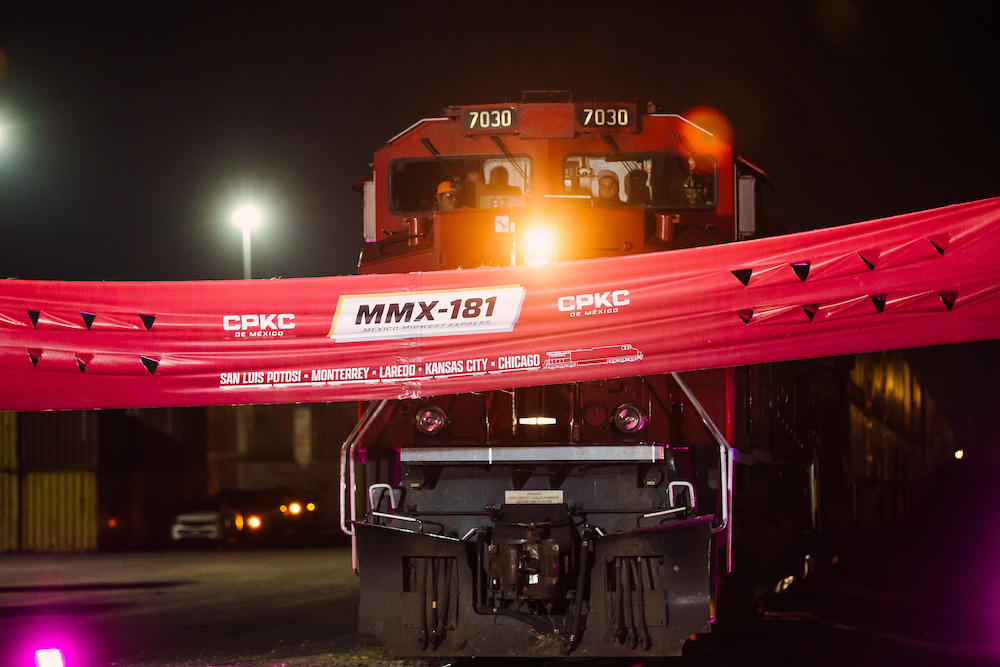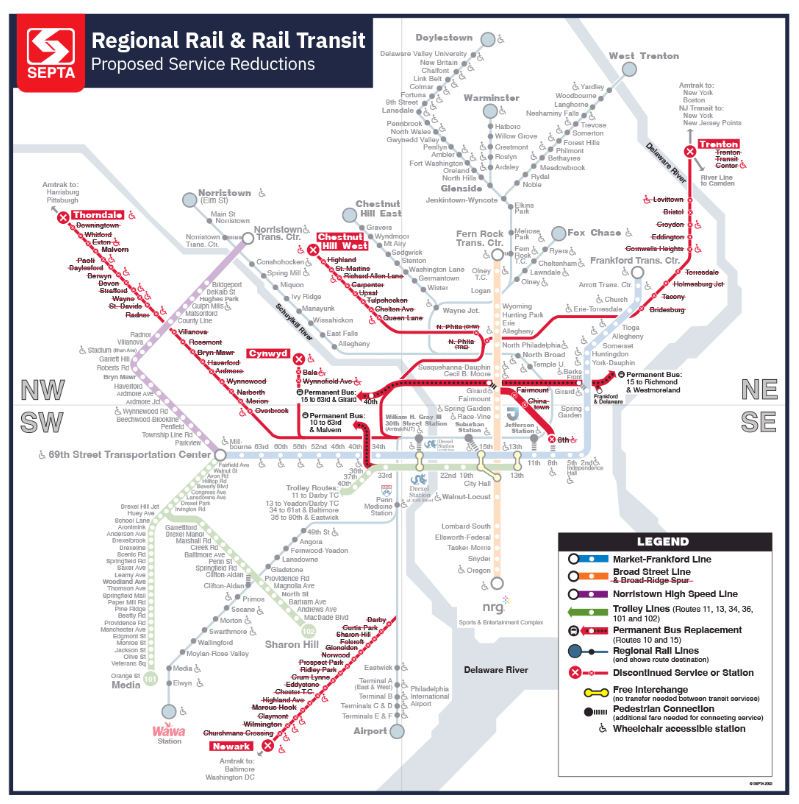
CALGARY, Alberta — CPKC today launched the Mexico Midwest Express premium intermodal service linking Chicago, Kansas City, and Laredo, Texas, with Monterrey and San Luis Potosi in Mexico.
A nighttime photo on CPKC’s home page showed train MMX-181 about to break through a CPKC de Mexico banner on its inaugural northbound run.
The newly merged railroad bills trains MMX-180 and MMX-181 as the first truck-competitive, single-line rail service option between the Midwest and Mexico.
“The Mexico Midwest Express offers truly best-in-class service and represents the growth potential of providing truck-competitive service and reliable rail transportation options for shippers with the newly-combined CPKC,” CPKC CEO Keith Creel said in a statement. “This is a game changer for this essential north-south trade corridor. Customers already are signing up for these new options as we compete hard to grow our business.”
Last month, CPKC announced new multi-year agreements with intermodal customers Schneider and Knight-Swift Transportation for service on the CPKC single-line north-south corridor. The northbound train featured a string of Schneider containers. “This is the beginning of what will be a game-changing opportunity within cross-border intermodal,” Schneider Executive Vice President Jim Filter said in a post on LinkedIn.
MMX-180 and MMX-181 link Chicago, Kansas City, Texas markets, Monterrey, and San Luis Potosi. The trains offer third-day service to/from Laredo, fourth-day service to/from Monterrey, and 4.5-day service to/from San Luis Potosi. MMX provides total transit time of 98 hours from Chicago to San Luis Potosi, which CPKC says is a day faster than the nearest competitor.
The railroad said a diverse group of shippers, moving a variety of products, will use the new service. CPKC said its single-line haul efficiencies, combined with seamless crossborder service, make MMX transit times competitive with over the road trucks.
Canadian Pacific and Kansas City Southern in March 2022 began dedicated interline intermodal service test runs between Lázaro Cárdenas, Mexico and Chicago as a proof of concept.
“CPKC is working with customers and investing in infrastructure to unlock the full potential of the newly combined network while continually raising the bar with industry-leading safety and sustainability practices,” the railroad said.
Canadian National, Union Pacific, and Ferromex on May 15 will launch their new Falcon Premium interline intermodal service connecting Detroit and Canada with points in Mexico.














It will also be interesting to see how long it takes 881 to actually get through Texas…
Take that, Uncle Pete!
Is any of this route have speeds above 60 mph and if so, how much?
And where…
Then after they arrive at Bensenville (and are finally grounded) how many hours or days (or weeks) does it take for the containers to get down the logistics warehouses in Will County? UPRR’s new Global IV intermodal terminal (in South Joliet) is literally just around the corner or down the street from most of them. The Chicago region remains the most heavily congested urban highway network in North America.
Bensenville to Joliet is about 40 miles and takes at least an hour even when traffic is light.
Exactly. Now you have a long time consuming dray across the region.. Where as UP and BNSF put the boxes right at the DC’s doorsteps in Joilet…
Do they sweep the trains before crossing the border or do the illegals just cross like normal?
What a ridiculous comment…
The trains are swept before they reach the International Bridge in Laredo and inspected by TSA and others as they cross the bridge. There are also under rail cameras to catch any hang ons from below.
While the gateway is well lit day and night, at night there is an infrared system to check for jump ons.
Somewhere I am not aware of is a low speed xray scanner that works like the luggage scan at TSA to try to detect people who are locked inside grain hoppers. After that horrific finding at a siding in Iowa where they found illegals who had been locked inside for 3 months (dead), they have been checking more often.
Let the benchmarking begin! Need picture of MMX-181 entering Bensenville and when.